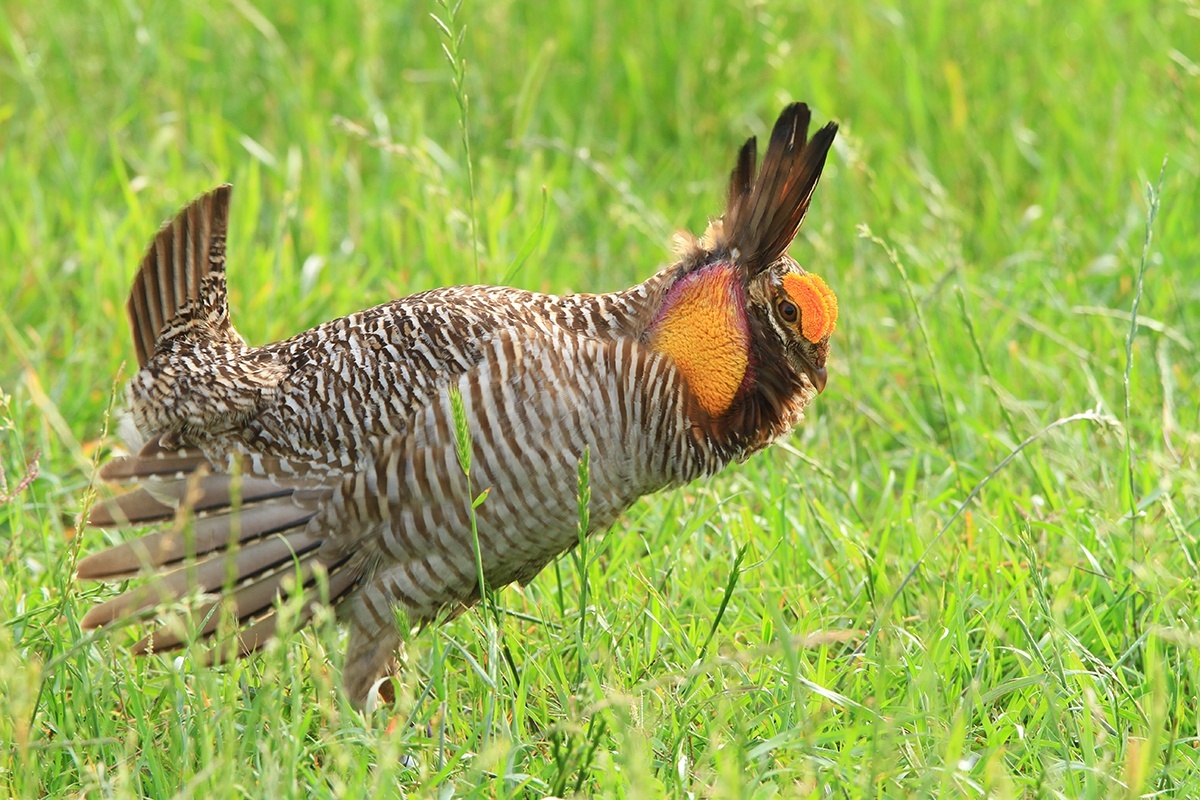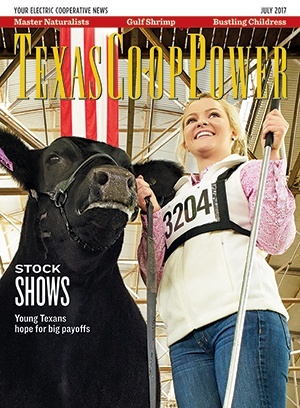The sun is just coming up on a chilly October Saturday, and I’m outside Eagle Lake in Southeast Texas, driving toward the Attwater Prairie Chicken National Wildlife Refuge to claim my seat on an 8 a.m. tour. As an enthusiastic birder, I’m excited at the promise of spotting the critically endangered Attwater’s prairie chicken. The refuge is just about the only place to see the bird.
It’s now 7:50, and traffic is at a stand-still. I see a large truck ahead that appears to be on fire. My phone rings, and a voice says “Joe, it’s John Magera from the refuge. Are you going to be here for the tour?” Magera, who is the deputy refuge manager, offers to guide me away from the traffic jam and to the refuge on back roads. Directions in hand, I am flying down a dirt road across part of the refuge and thinking, “What if I run over a prairie chicken?”
Fortunately, that doesn’t happen. I arrive at the refuge headquarters, a group of low-slung, pale, utilitarian buildings, to find several people waiting on me. As we move toward a large van, Magera walks over to shake my hand and says, “Glad you made it.”
Magera exhibits a warm and jovial manner as he explains he has worked eight years at the refuge. Over the course of the free three-hour tour, I see my first Attwater’s prairie chicken and an expanse of native coastal prairie.
As we drive in search of the elusive prairie chicken, we crane our necks to identify other birds, and Magera explains the job of managing the prairie, a treeless combination of tall native grasses. He notes that controlled burns, invasive plant removal and the use of cattle to simulate the effect of buffalo on the prairie are all important steps to help maintain the native habitat. The Texas coast once was teeming with Attwater’s prairie chickens, but conversion of coastal prairie to farming and ranching fragmented and destroyed the bird’s ideal habitat. By the mid-1960s, little habitat remained. In addition to habitat fragmentation, several other factors conspire against the birds, including fire ants, a short life span and predators. As Magera says, “Everything eats chicken.”
Since opening in 1972, the refuge has provided a home to a dwindling prairie chicken population and enabled research designed to prevent the bird from becoming extinct.
Refuge employees battle all the risk factors and acknowledge the weather, as well. Because the prairie chicken builds its nest on the ground, rains cause trouble, and the past two years of spring rains reduced the success rate for the breeding season. The refuge partners with several zoos that breed the birds in captivity. Every year, 200–300 of the birds are released, which improves the odds of the species’ survival.
Studies of fire ants have shown that they compete with chicks for insects, so a fire ant suppressant helps reduce the competition for food. Radio collars help biologists track the birds during breeding season, and this helps with predator control.
Public access to the refuge’s 10,000 acres is limited. The staff maintains a 5-mile driving loop along with two hiking trails, each between 1 and 1 1/2 miles long. Still, the best opportunity to see a prairie chicken is on the monthly guided tour.
The first Saturday of every month and every Saturday in April, up to 12 guests can sign up for a guided tour. Most of the tour is spent in the van, so opportunities for photography are limited. Even so, there are myriad birds in this prairie habitat, and birders will get a good opportunity to add to their life lists. Visitors spot crested caracaras, white-tailed hawks and Sprague’s pipits, as well as up to 16 species of sparrow.
The prairie itself is worth the trip. “Even if the bird wasn’t here,” Magera says, “the refuge would be just as important for preserving the native coastal prairie.” Estimates indicate that less than 1 percent of virgin coastal prairie remains today. Made up of four native grasses, the prairie is resilient and tolerates drought much better than the grasses more commonly used in commercial ranching. Some landowners see the benefit of native grasses and have converted acreage back to native prairie.
At the end of the tour, I’m elated and already thinking about a return trip. The male Attwater’s prairie chicken performs an elaborate dance during April’s breeding season to impress females. The male inflates yellow air sacks around his neck and stamps his feet while emitting a low booming sound. I want to see that, and I hope I won’t have to worry about a fiery traffic jam and thoughts of running one over as I excitedly fly down backroads for the tour.
——————–
Joe Sherfy is a birder and outdoors enthusiast who lives in Austin.



